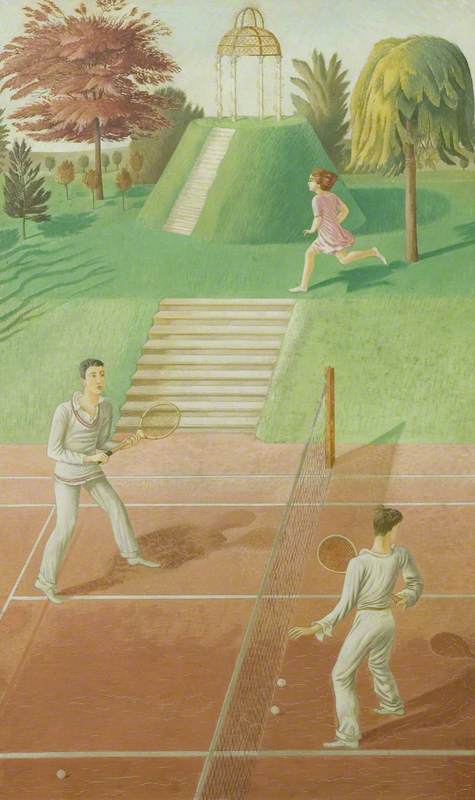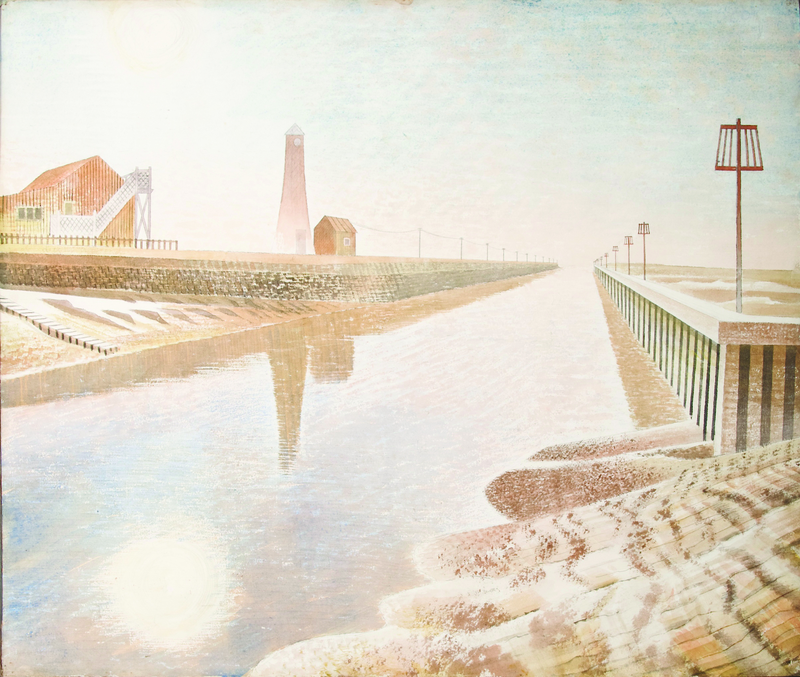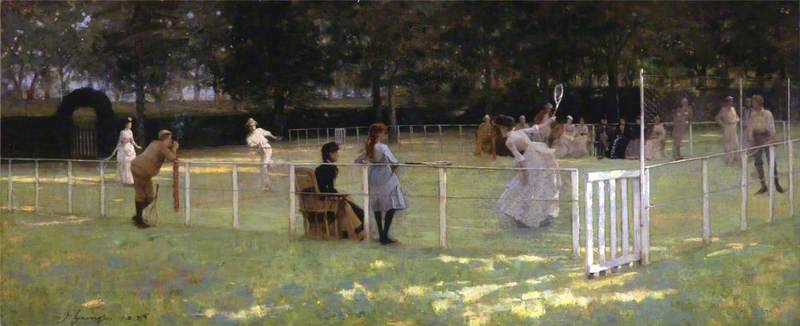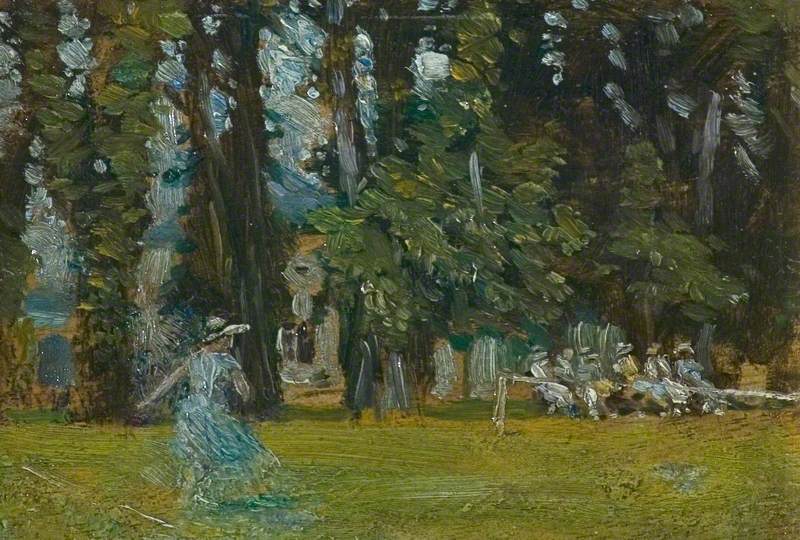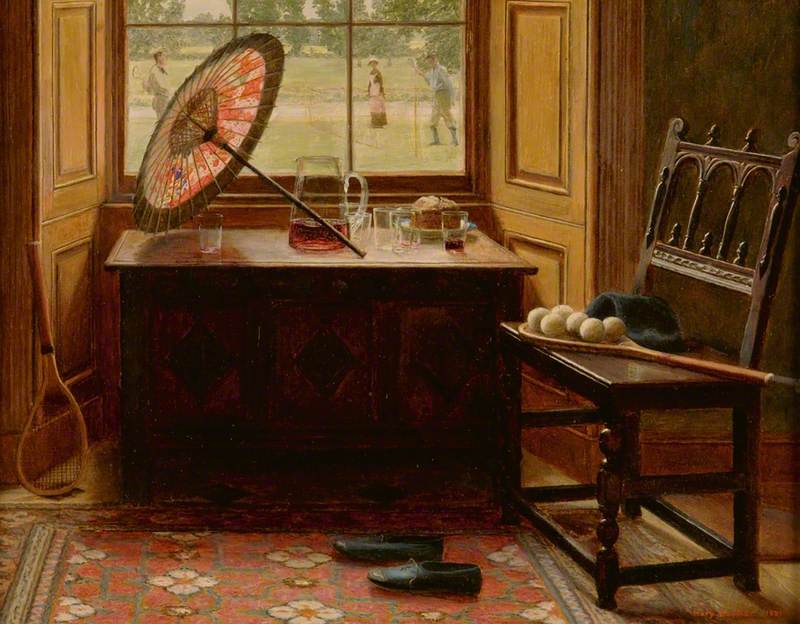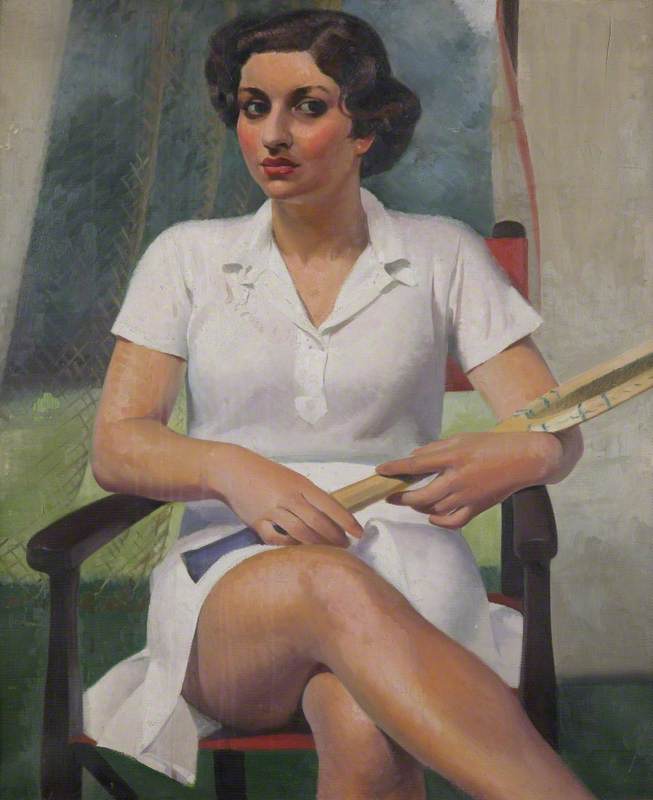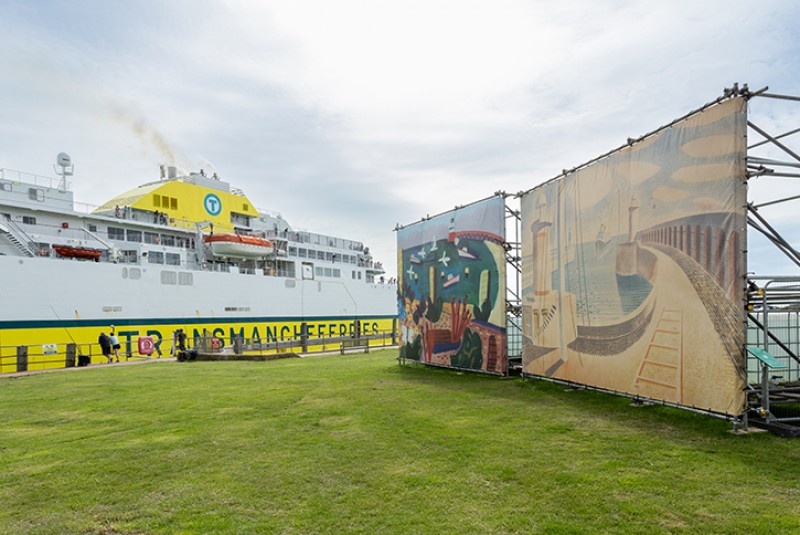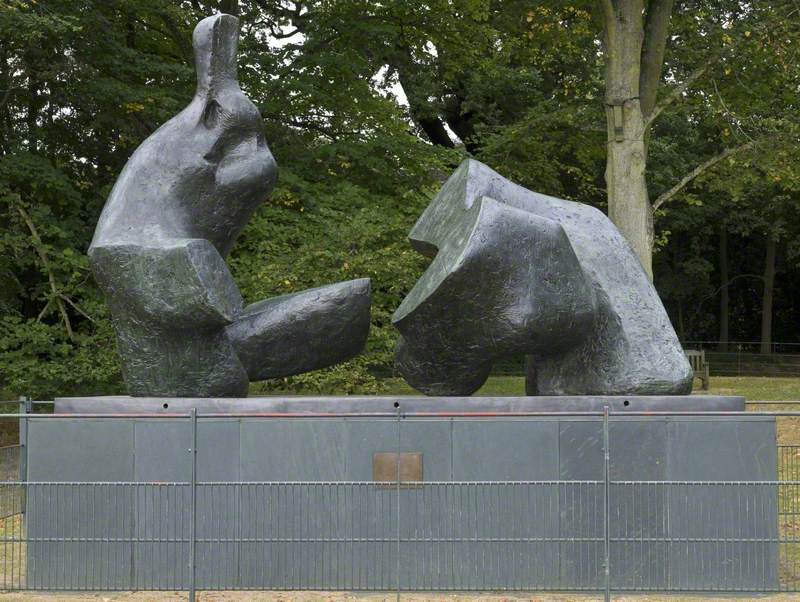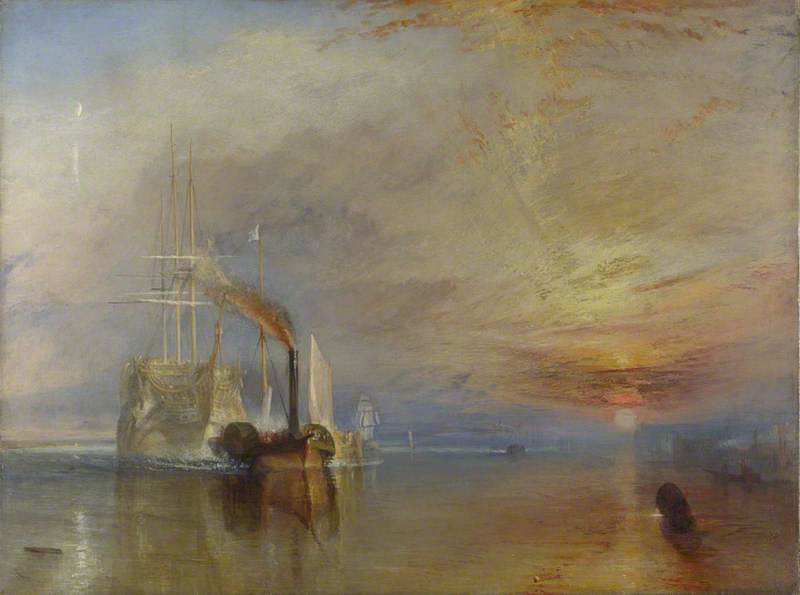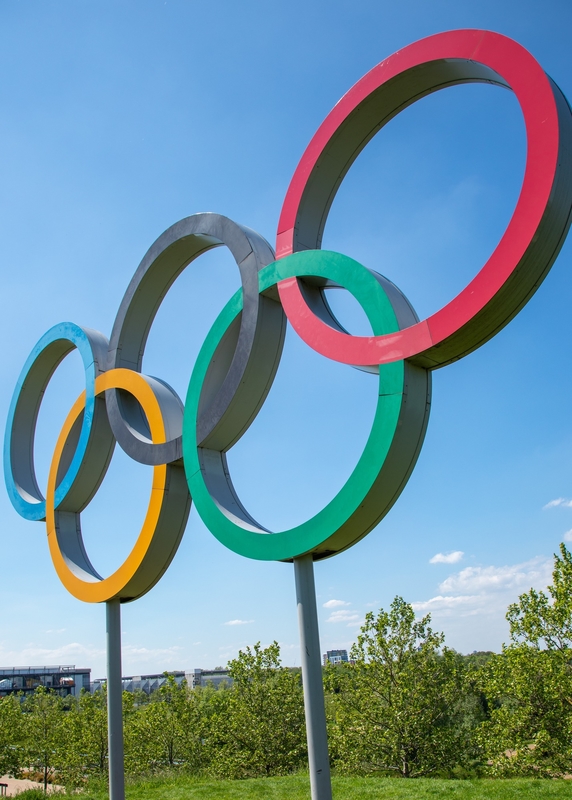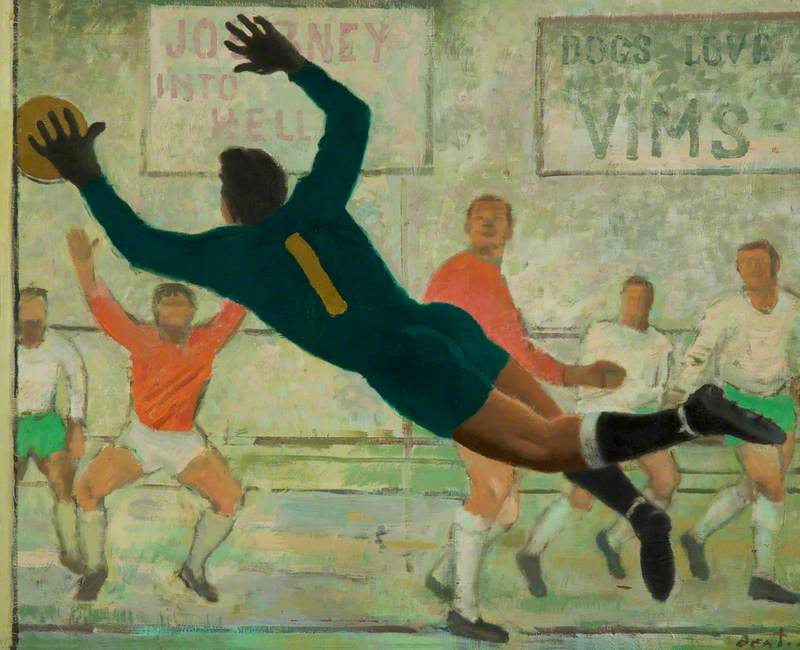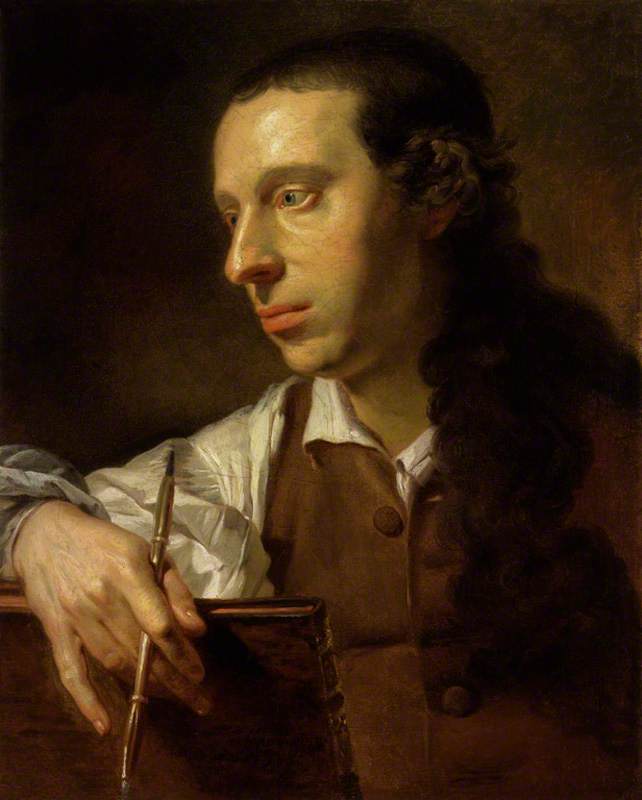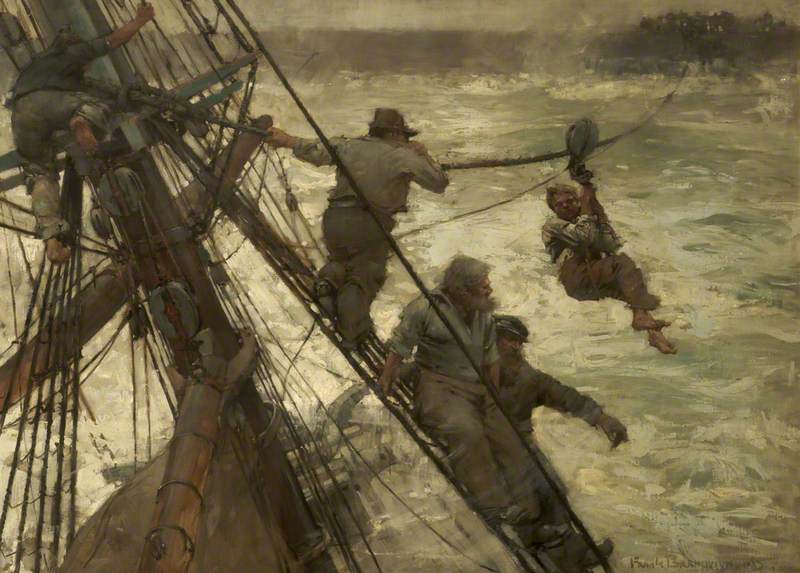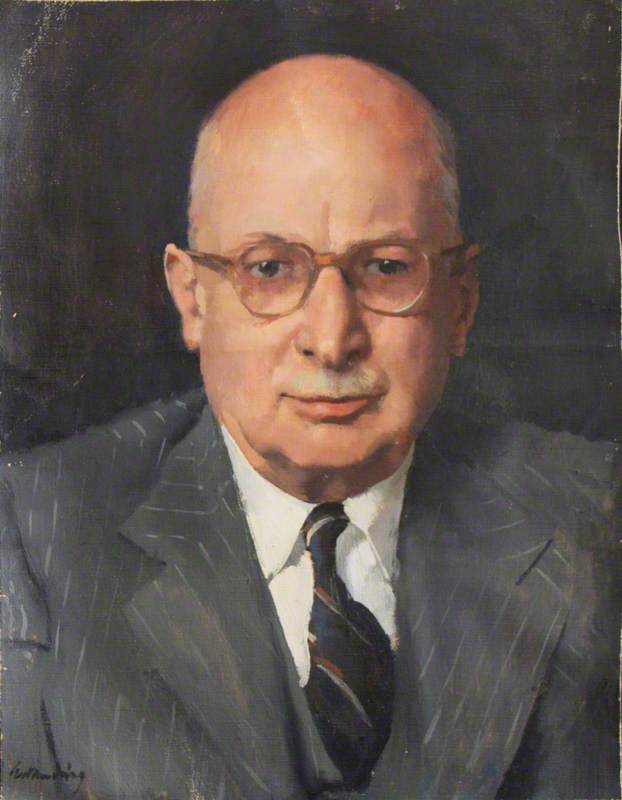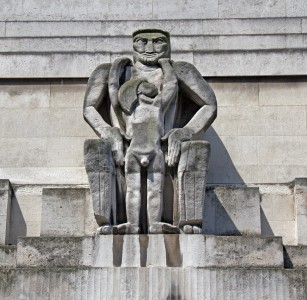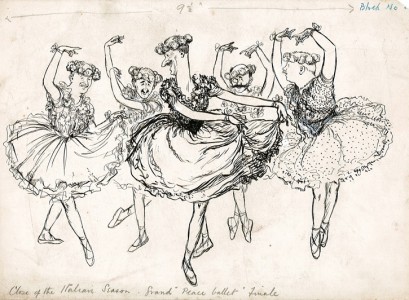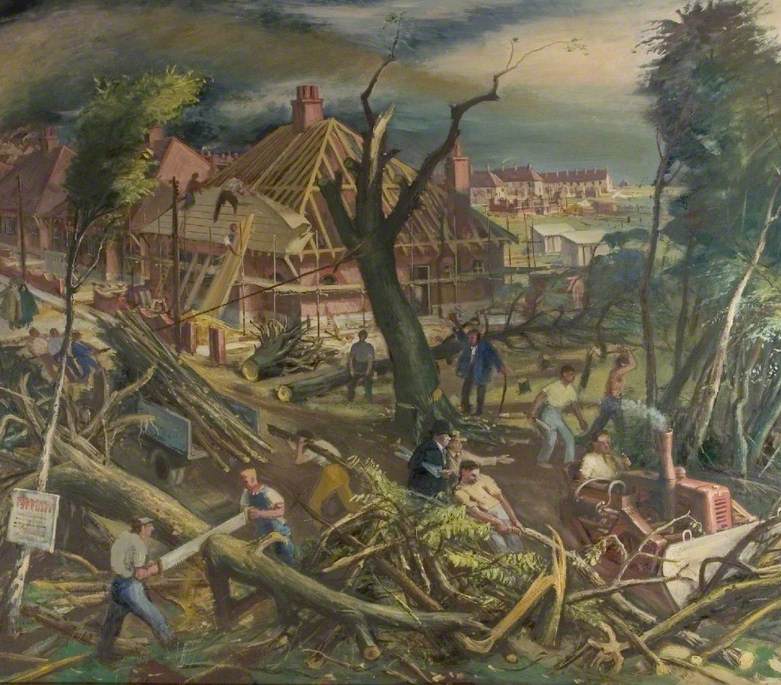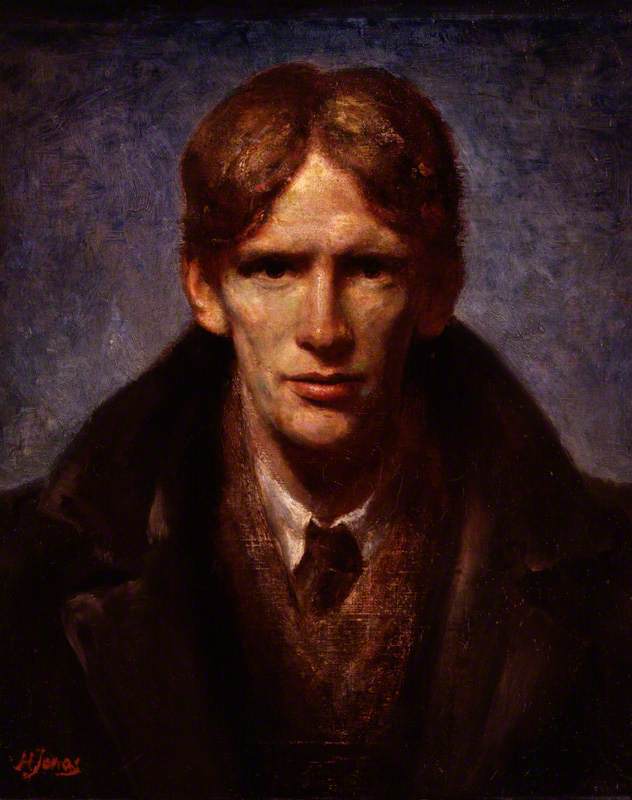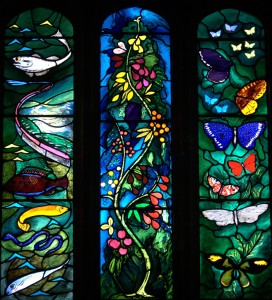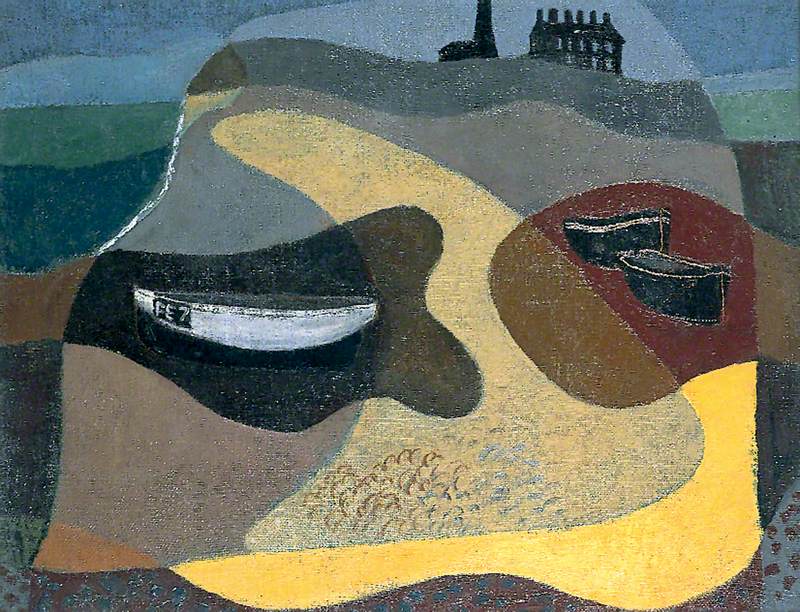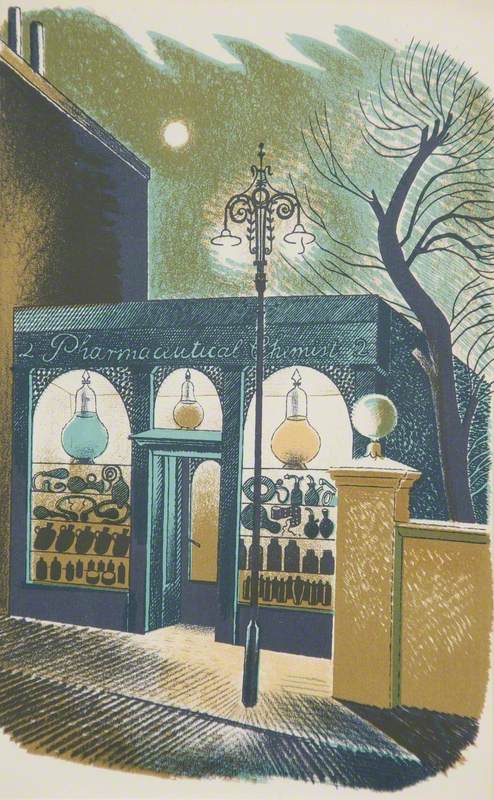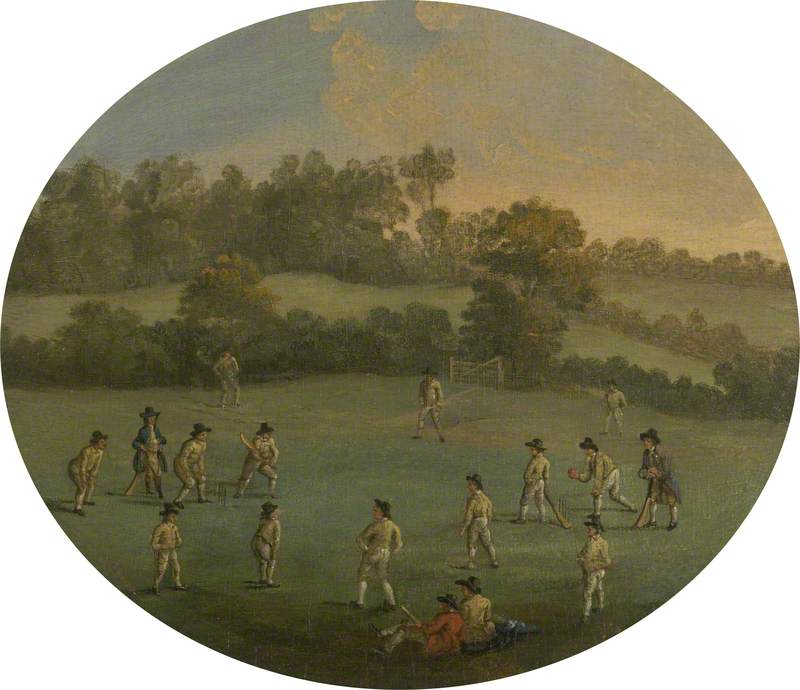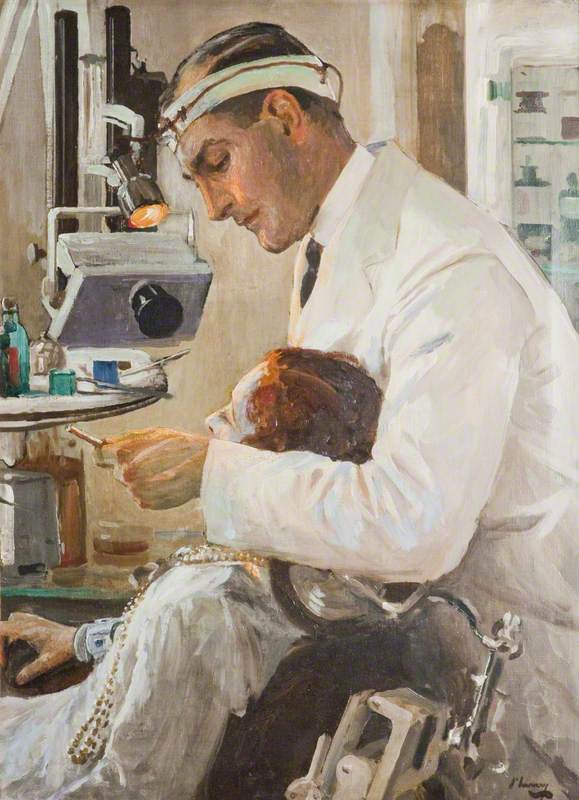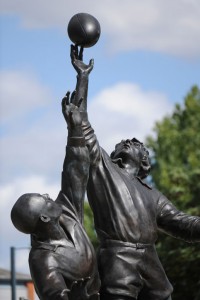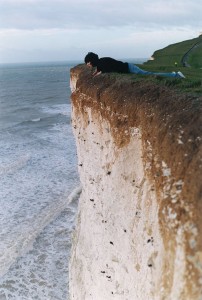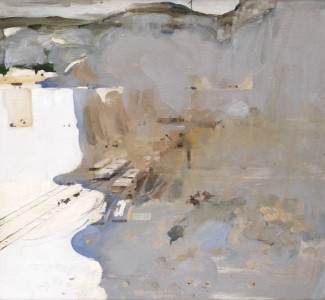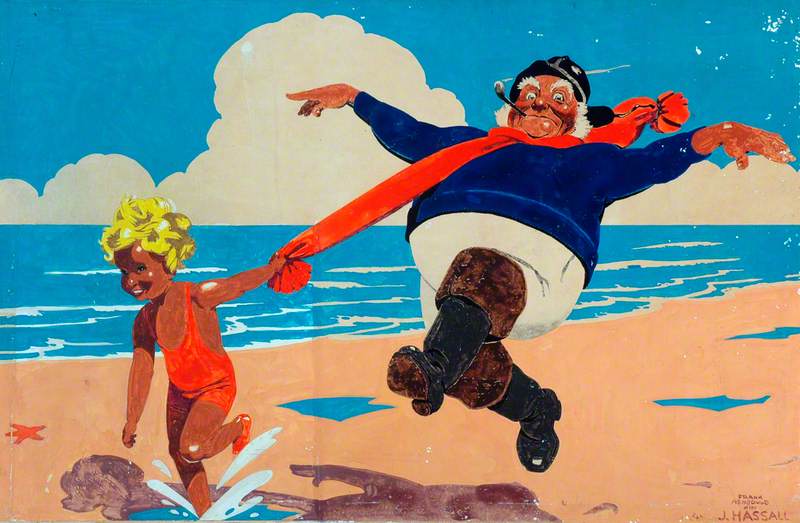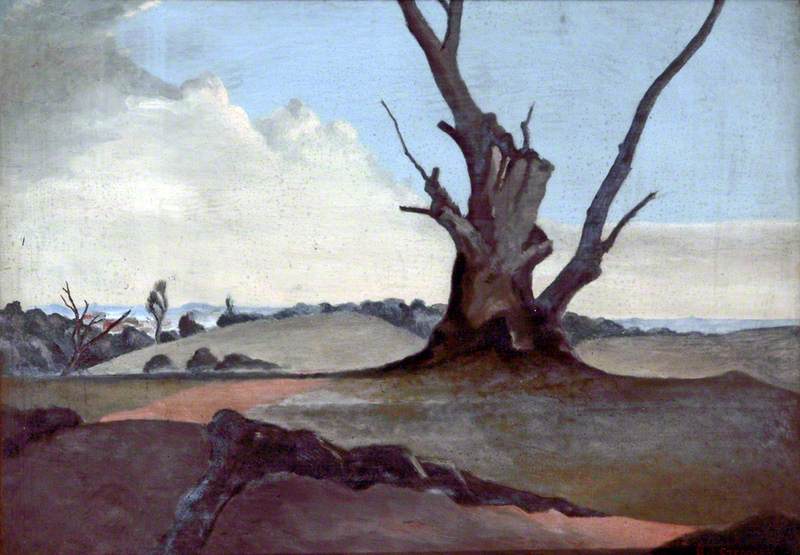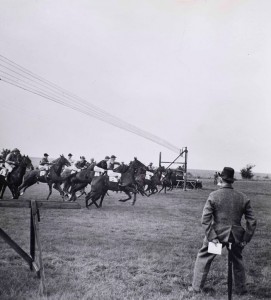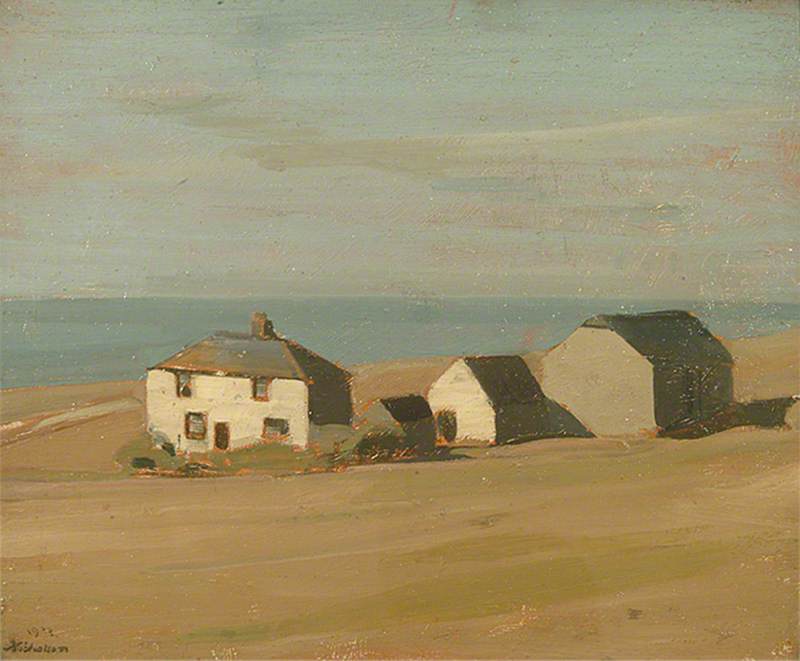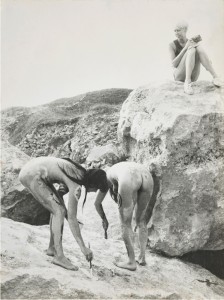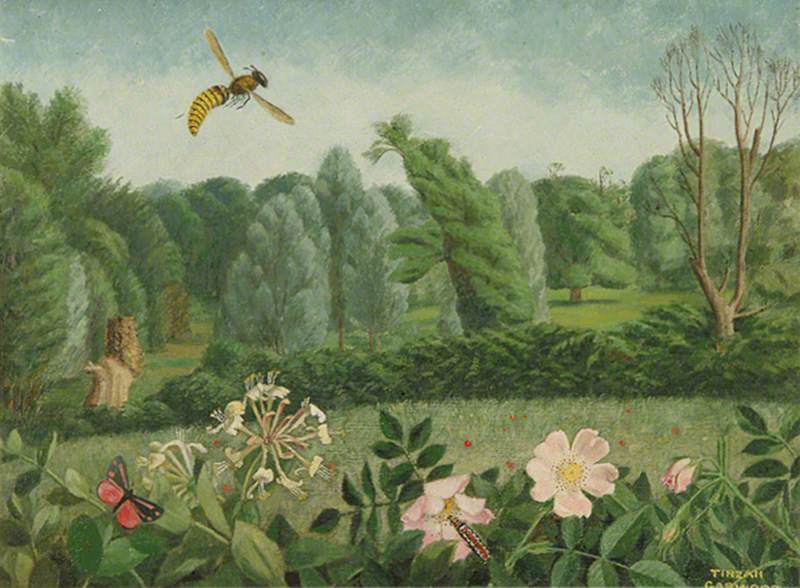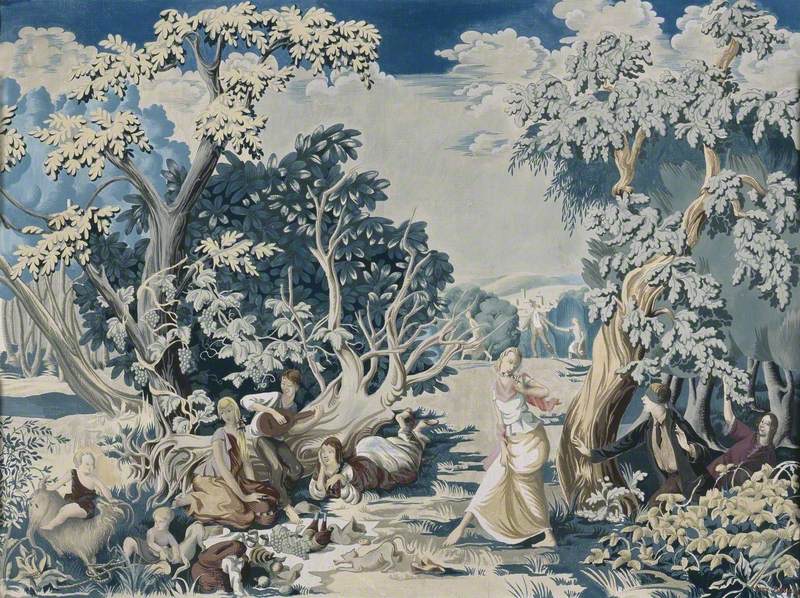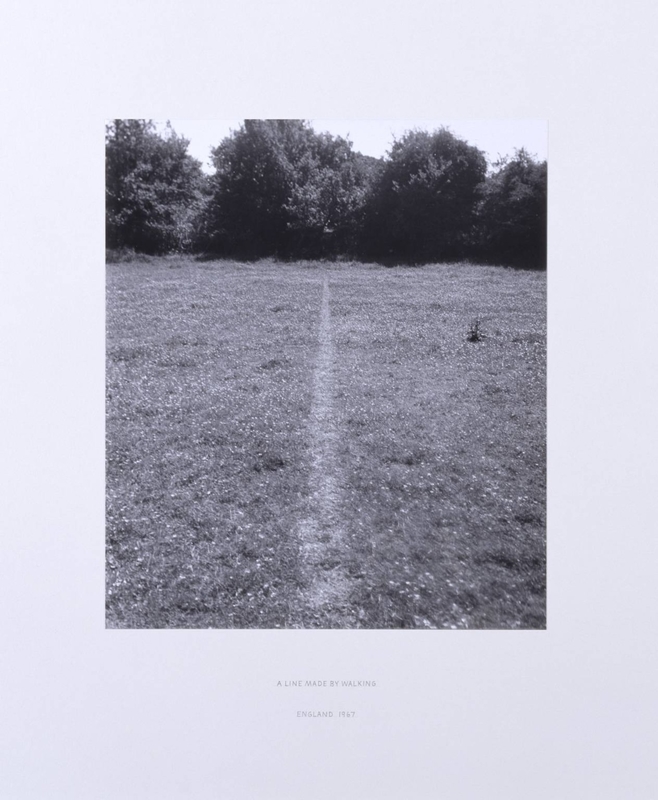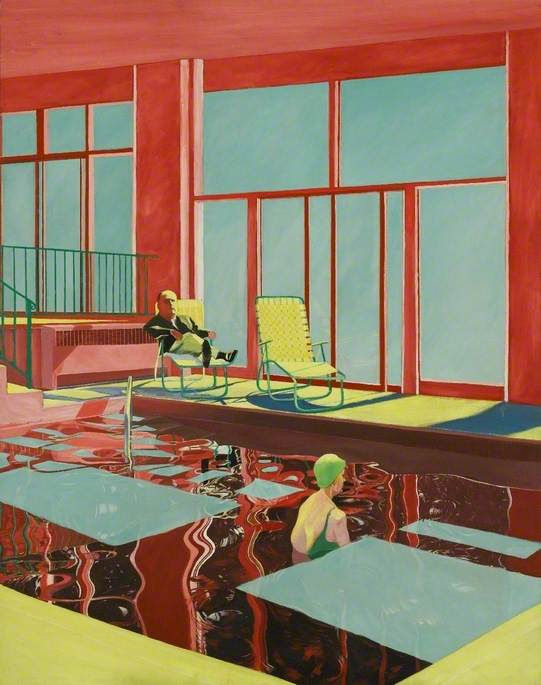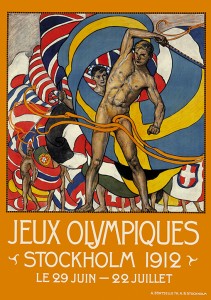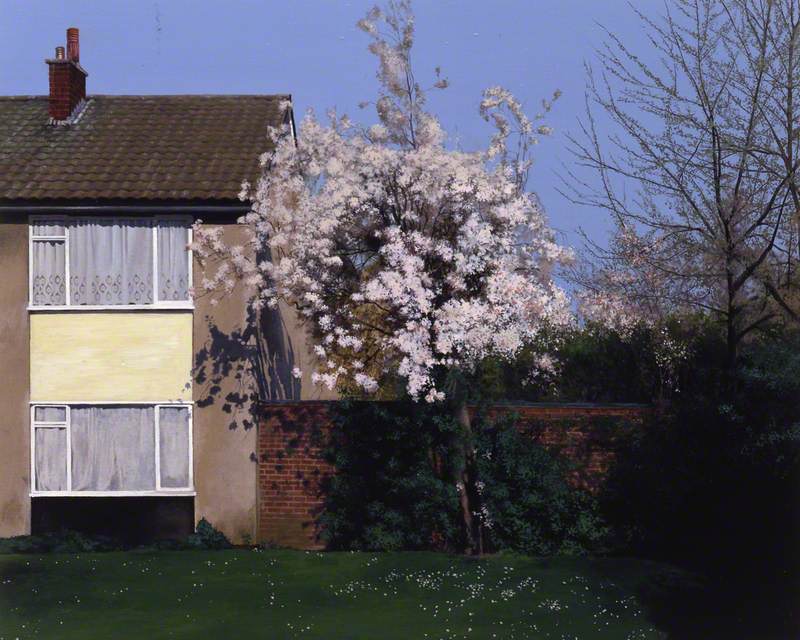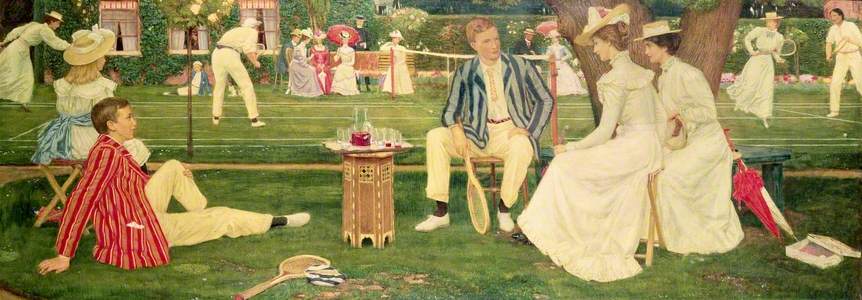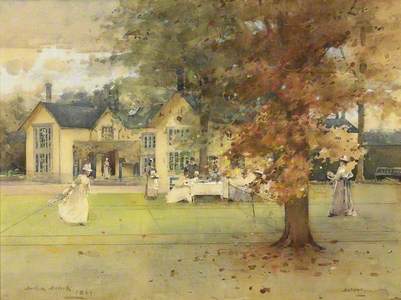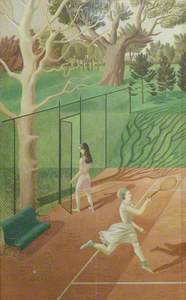There are many reasons why someone might consider Eric Ravilious (1903–1942) to be a quintessentially 'English' artist.
Firstly, there’s the man himself. Living a relatively quiet life between teaching commitments in London and painting in the countryside, Ravilious only left England twice before the Second World War and his first excursion had him complaining about the heat (Italian sunshine wasn’t interesting enough to paint, either). In his student days, he had a brief stint playing that favourite English stock character, the underdog sportsman, playing alongside Henry Moore on the Royal College of Art’s woefully inept football team.
Then there’s the work. Taking inspiration from Romantic luminaries such as Samuel Palmer and John Sell Cotman, Ravilious’s best-loved watercolours typically depict unpeopled landscapes that waver between a charming whimsicality and a distinctly modern sense of unnatural stillness.
Restrained, precise, decidedly unemotional. Ravilious’s work embodies those traits that have long been assumed to be the sum of the English character. So it should come as no surprise that Ravilious was chosen to help represent the English way of life to its European neighbours at the 1937 International Exhibition in Paris, called on to contribute a scene dominated by a tennis game that owed much to his earlier Tennis triptych (1930 – see above).
Perhaps the most immediate sense the triptych impresses upon its viewer is one of leisure. Tennis already had a history of being a suitable subject for conveying a sense of sophisticated fun – society painter John Lavery returned to the theme often in his work, for example, with the doll-like players in The Tennis Party bearing a passing resemblance to Ravilious’s.
Charles March Gere’s later painting of the same name is an essay in Edwardian elegance, relegating the action to the background to depict four dandified men and well-dressed women idling, a racket discarded next to them.
If tennis was starting to shed these associations in Ravilious’s lifetime – the days of upper-class amateurs winning Wimbledon were numbered with the rise of serious-minded professionals – you wouldn’t know it here. Ravilious’s players drift with
Conventional proportions are cheerfully discarded, and strangely, for a painter so typically concerned with the expressive possibilities of the English skies, the sky here is a wall of solid grey that effectively shuts out anything lying beyond this tightly contained world. The plane these strange players inhabit is pleasingly quiet, sequestered as only a dream world could be, charming in the complete inconsequence of its action. What is so 'English' about all of this? And why is this the face England turned to Europe?
This sense of leisure has been hardwired into scholars of the English character virtually since such investigations began. It’s a character borrowed wholesale from the upper classes whose habits and social rituals had long embodied the English ideal. Their perceived sportsmanlike behaviour, sense of fair play, and cultivation of a refined form of amateurism have been tacitly accepted as the hallmarks of 'the English gentleman' in whom the spirit of a nation dwelt. Tennis merely provided artists with a useful focal point to express this
Historically the preserve of these upper and upper-middle classes, its most visible iterations promoted this gentlemanly detachment from real-world concerns. In those early days, the point of Wimbledon wasn’t to win, because what could be more vulgar than spoiling the fun to prove your worth? This is why stories of Wimbledon’s early winners in the late nineteenth century not bothering to defend their title make sense (Lottie Dod was too busy sailing around Scotland in 1889, for example).
Even now it is undoubtedly the preserve of competitive professionals, Wimbledon continues to resemble a country lawn writ large – its refusal to ditch the grass in favour of hardcourt surfaces and the mass consumption of strawberries and Pimms hint at its roots. That celebrity spotting in the stands is something of a national pastime suggests the longevity of Charles March Gere’s vision of tennis as an occasion where the sport is sometimes secondary to the socialising. Tennis remains, to some extent, the heavily ritualised star in the firmament of this national self-image that privileges charming amateurishness over formidable professionalism.
As Britain once again addresses questions of what sort of country it is, particularly in European eyes, it is worth revisiting the gulf in reception between the triptych itself – commissioned by Sir Geoffrey Fry, who served as the Private Secretary to Conservative prime minister Stanley Baldwin – and the later tennis scene at the International Exhibition. Debating the value of the British display at an event remembered now for the Soviet and Nazi pavilions symbolically squaring off against each other as political tensions mounted to breaking point, Labour MP Ellen Smith’s acid question as to whether it would be 'possible in the Exhibition to suggest that the British people occasionally do some work?' suggests that this sort of rhetoric was wearing thin. Its complacent nostalgia for a world that was already slipping away left its defenders in danger of succumbing to self-satisfied fantasies of privileged isolation.
Are we in danger of this once again? Enthusiasm for Downton Abbey and, more to the point, the ostensibly old-world ways of Jacob Rees-Mogg suggests that something of this unreflective tendency persists. Despite its ultimately harmful political shortcomings and increasingly obvious obsolescence, modelling a nation’s identity on a fantasy version of its richest sons retains a curious and increasingly guilty power over many imaginations, my own (guiltily) included.
Ravilious’s Tennis is a lovely dream, a glimpse into an alternate universe where all the world is one long country house getaway. But we would do well to remember that it is just that.
Samuel Love, MA student at the University of Edinburgh

